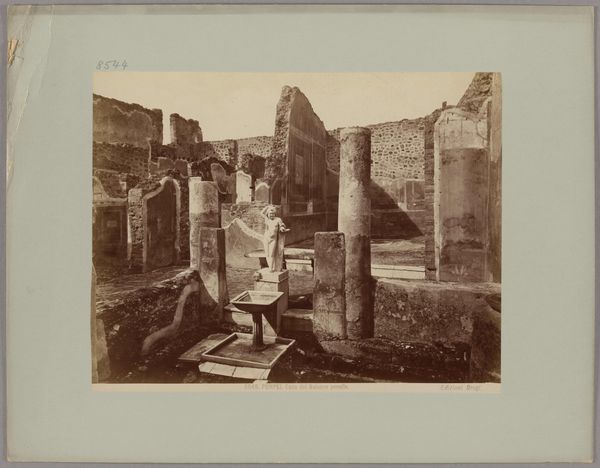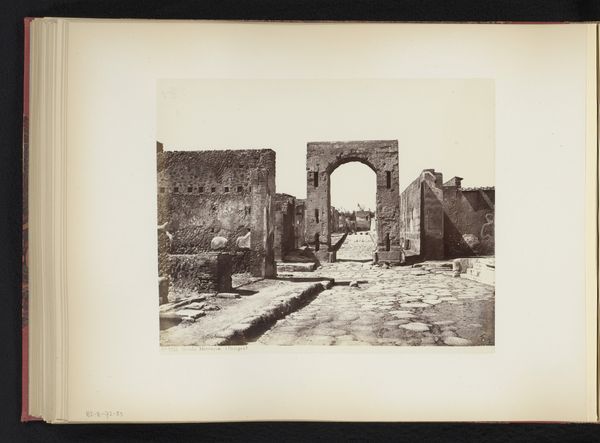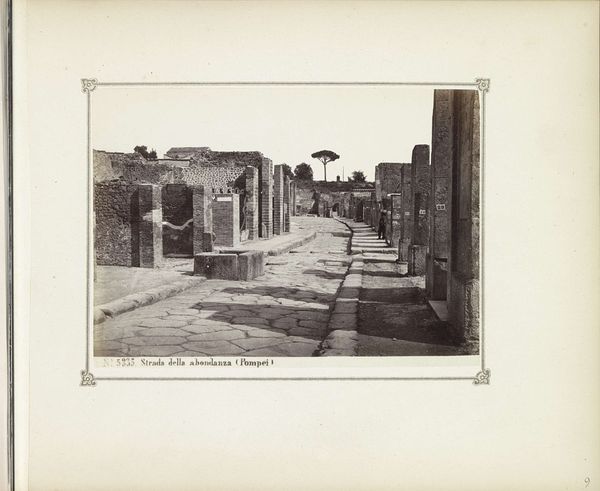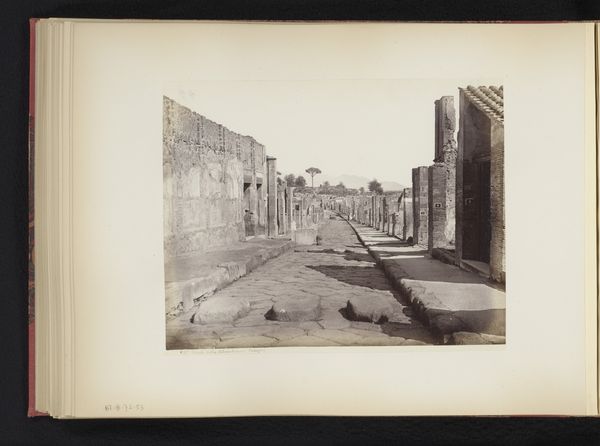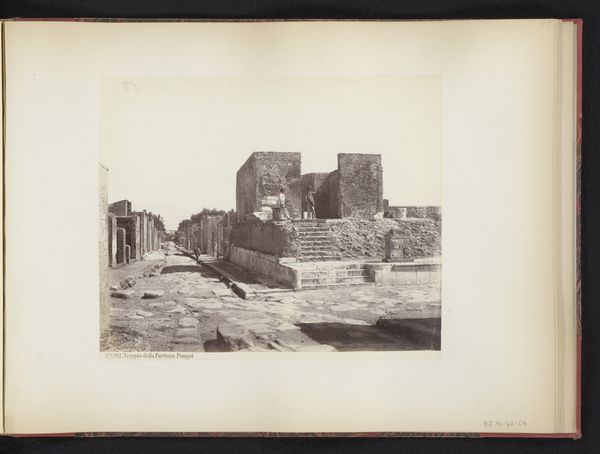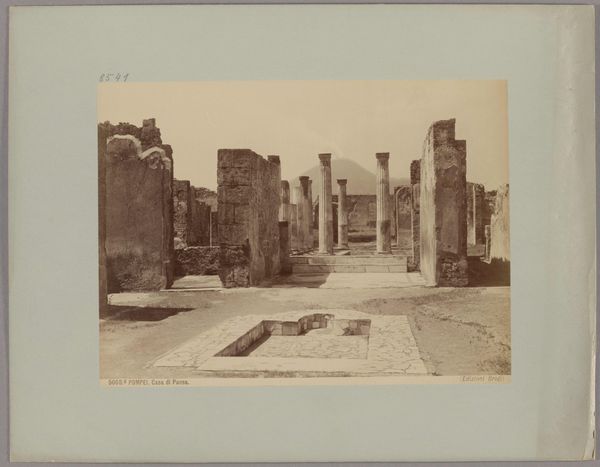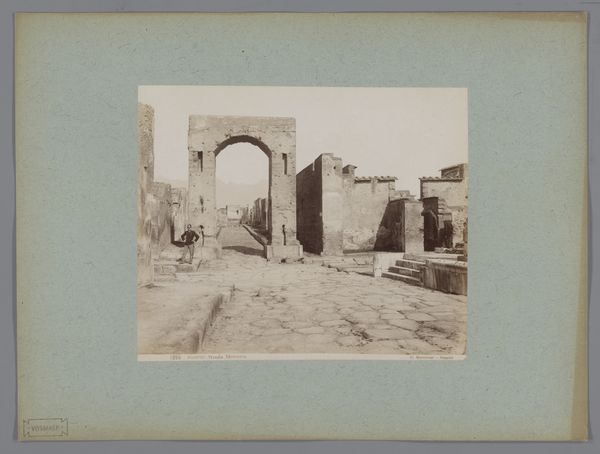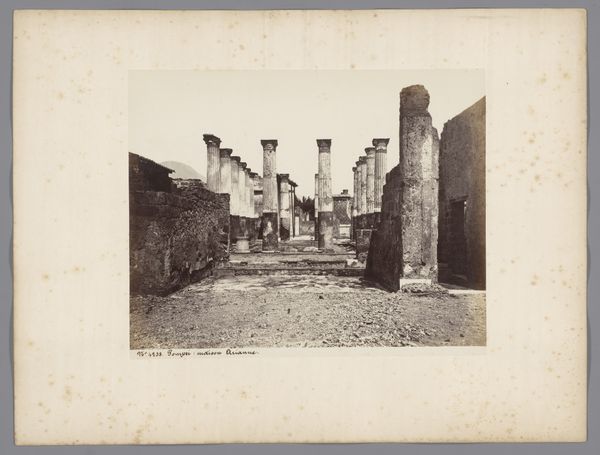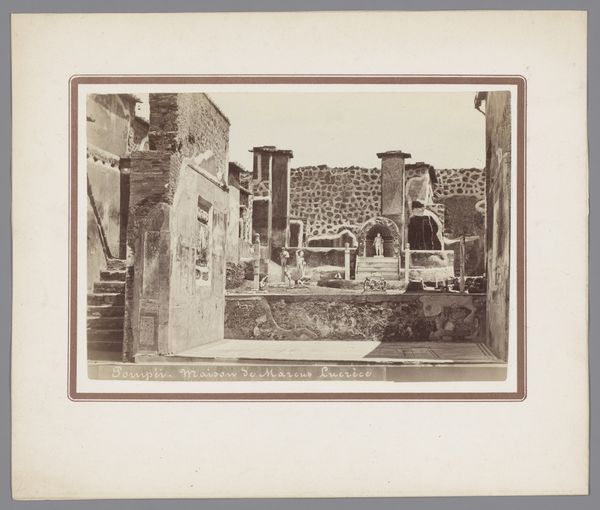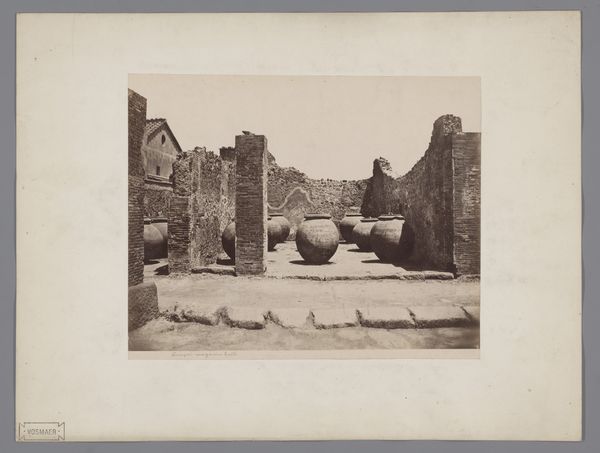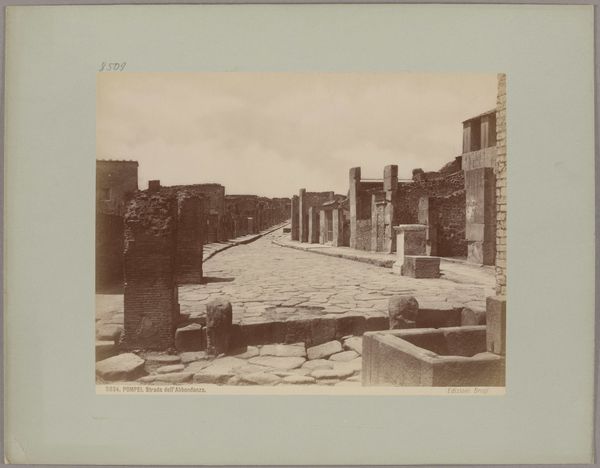
Gezicht op de ruïne van het Casa di Salustio te Pompeï, Italië 1870 - 1890
0:00
0:00
giorgiosommer
Rijksmuseum
photography, site-specific, gelatin-silver-print
#
landscape
#
photography
#
ancient-mediterranean
#
site-specific
#
gelatin-silver-print
#
history-painting
#
realism
Dimensions: height 203 mm, width 246 mm
Copyright: Rijks Museum: Open Domain
Curator: Standing before us is a gelatin silver print entitled "Gezicht op de ruïne van het Casa di Salustio te Pompeï, Italië," which translates to "View of the ruins of the House of Sallust in Pompeii, Italy" captured between 1870 and 1890 by Giorgio Sommer. It resides here at the Rijksmuseum. Editor: The sepia tones lend it an antique feel, quite haunting, really. A window into a world buried and preserved by catastrophe. What strikes me first is the stark contrast between the crumbling stonework and the rather casually posed figures. Curator: Indeed, the ruins speak volumes. Consider the House of Sallust—it wasn’t just a building; it was a microcosm of Roman society, reflecting their lives, their aesthetics, their very sense of being. Sommers’s image captures that, though veiled by time. The figures almost seem like ghosts superimposed onto the present, observing its fall. Editor: It's a strange tension between the documentation of archeological space and something staged for a visiting tourist. You can almost smell the fixative. Gelatin silver prints of that time were very popular for this purpose, they offer incredible detail and a tactile quality, capturing the texture of the stone, the weight of history… they are literally produced through layers. What stories can these walls and stones actually tell us about those inhabitants. Curator: Sommers, through his lens, reminds us that ruins are never just piles of stone. They’re palimpsests, layered with memory and meaning. The open sky and composition are powerful. In fact, there are no ceilings—only what might be held or supported from memory. Editor: It seems the artist highlights an invitation for those looking at the artwork to imagine it for themselves: from their point of view, which materials made their fortune, how labor made it possible, how their lives are in service to them in the present moment. The symbolism comes full circle as the artist prompts those in modern-day to feel gratitude for those sacrifices. It is up to us to give their memory an infinite horizon, so to speak. Curator: Beautifully said! The continuity is essential, reminding us to question and embrace historical, cultural, and human context and memory through the symbols offered by visual form. Editor: Material conditions in the current moment show that those laborers have an opportunity for their work to echo infinitely through time, and for it to speak beyond themselves.
Comments
No comments
Be the first to comment and join the conversation on the ultimate creative platform.

